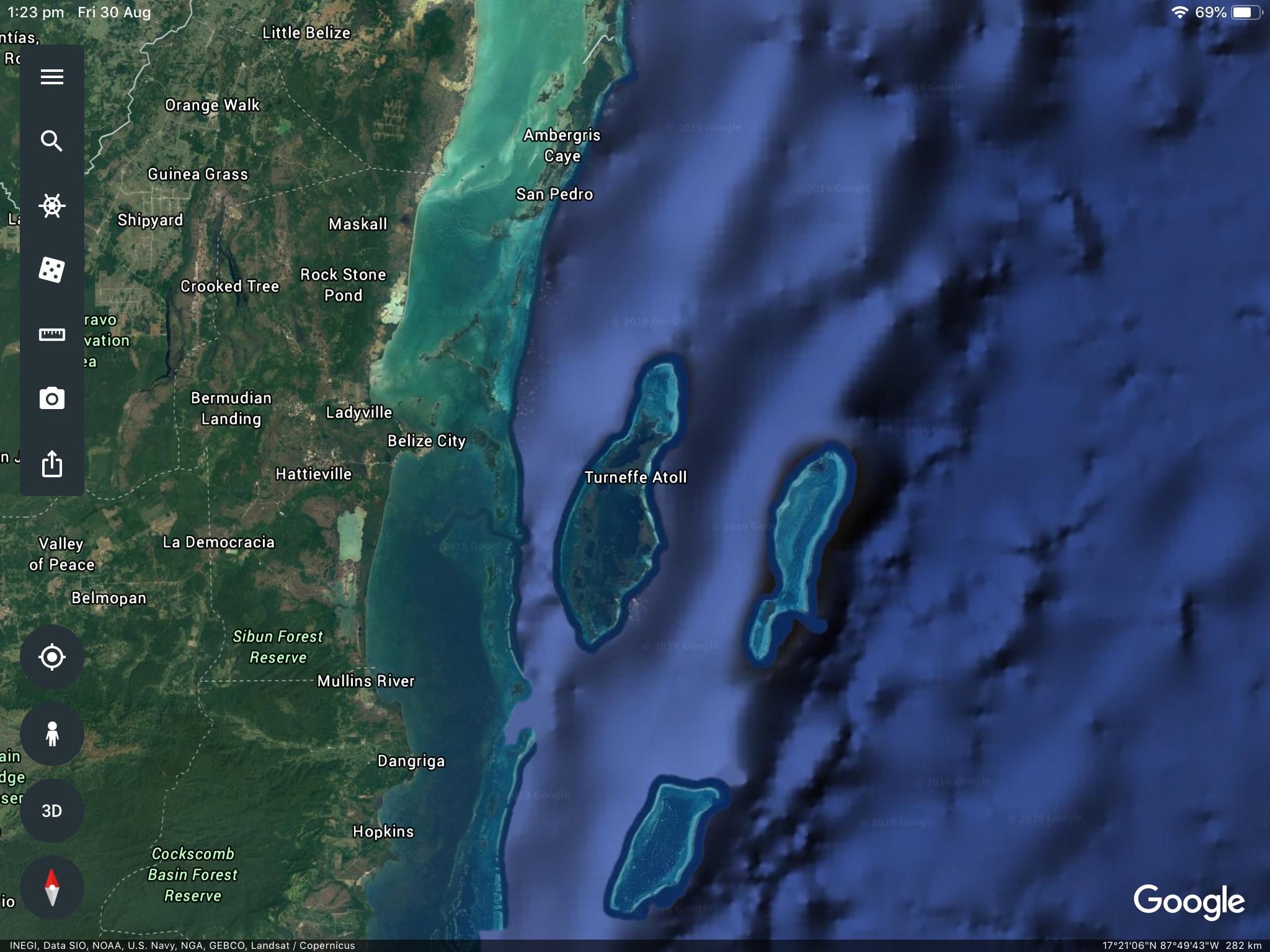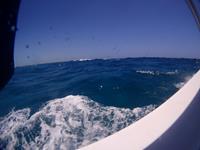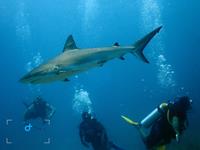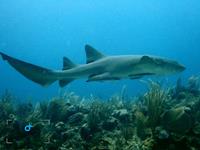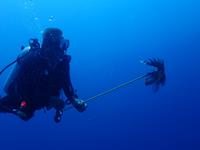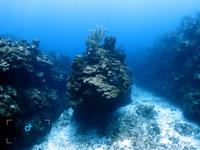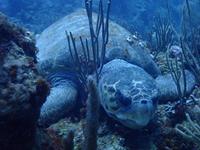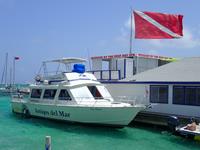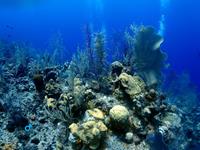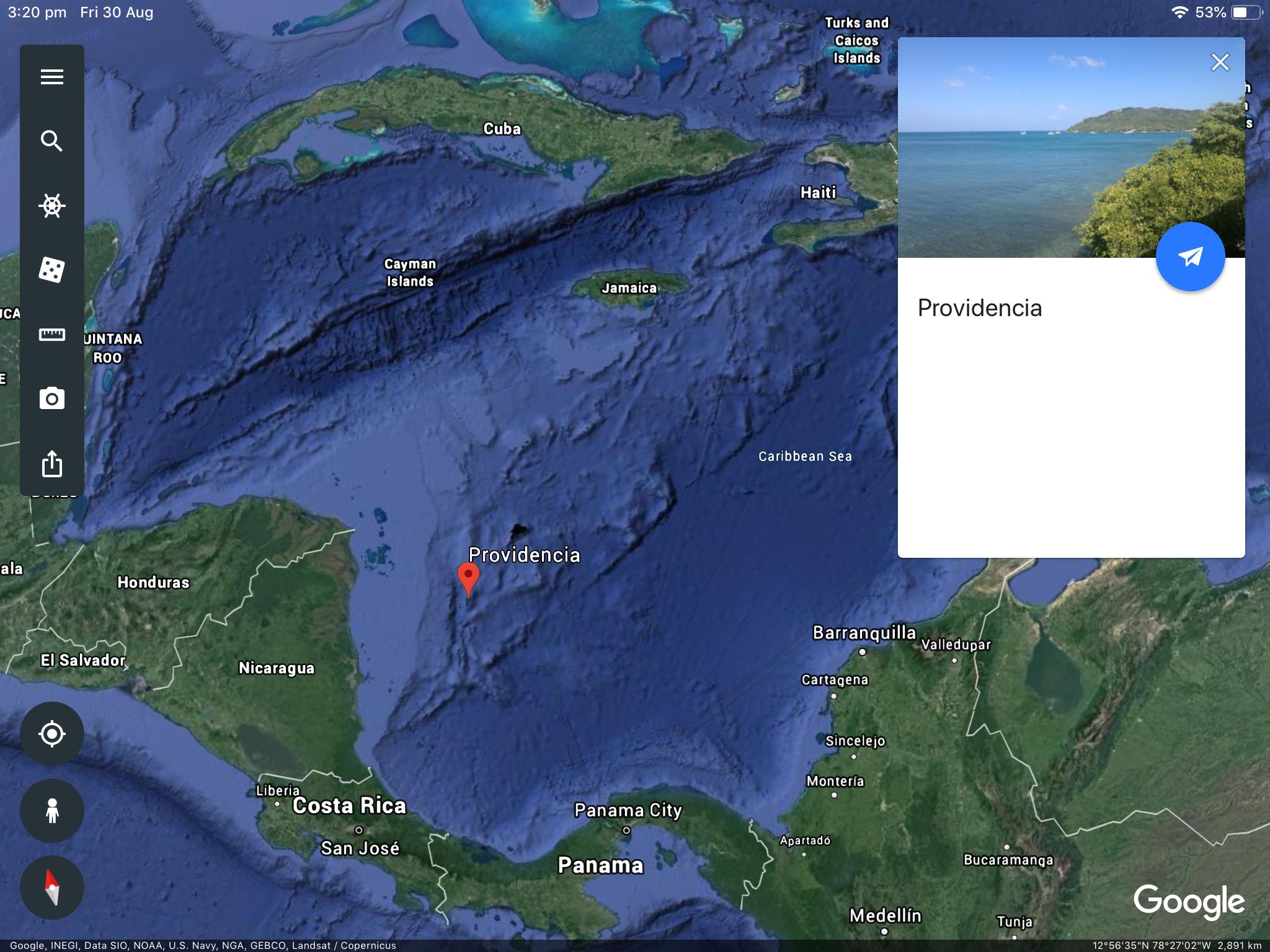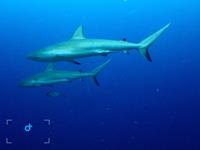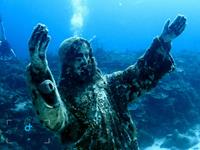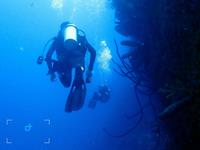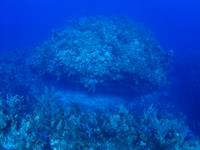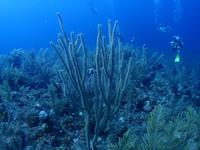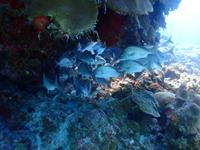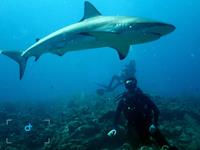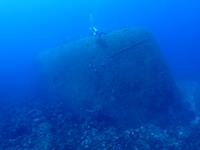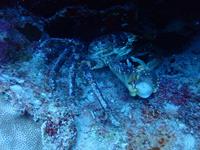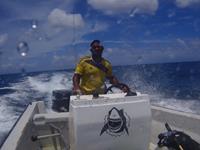DIVING IN THE CARIBBEAN (BELIZE AND COLOMBIA) by Andrew Falconer
As part of a wider trip to Latin America, I spent some time diving the Caribbean in Belize and Colombia during August and September. At this time of the year it is “the low season” as it coincides with the end of the American school holidays and the start of the hurricane season.
BELIZE
Belize is a small Central American country, formerly known as British Honduras, rather unique in that it is English speaking, and it also has the second largest barrier reef in the world after Australia. As such it is a well known spot for scuba divers, mostly from the USA and Canada. We stayed for a week in San Pedro at Diana’s Air B and B which was away from the noisy and dusty Main Street but close enough to Ramon’s Dive centre, with whom I dived the Ambergris reef just offshore. The coast of San Pedro (and all the Yacutan) is currently being plagued by vast quantities Saragossa seaweed washing up, making shore swimming impossible and smelling unpleasantly. Diving is unaffected.
|
Location of San Pedro, Ambergris reef and Turneffe atoll |
I did six dives over three days on Ambergris reef, all accessible in about 5 minutes by fast dive launch via a passage through the reef.
|
The passage out to the Ambergris reef. |
Reef shark action |
The weather was mostly sunny and windy, which caused the sea outside the reef and especially in the passage to be quite rough.. On the first dive of the third day the waves in the passage were exceptionally large, and one wave produced a wall of water over the bow which soaked everything, and resulted in the boat coming down with a big thump which really jarred my back. Getting in the water with a backward roll was ok, but you had to be really careful getting back on the boat. On most of the dives there only a couple of other divers plus the guide so the group was small.
|
Nurse sharks were docile and unafraid |
Our guide speared several lionfish |
All of the dives were noticeable for the number of sharks, mainly nurse sharks but also the occasional reef shark. The nurse sharks were very docile and totally unafraid of divers, coming right up and allowing themselves to be touched. On two of the dives our guide speared a lionfish (which are an introduced pest to the Caribbean) and fed them to the nurse sharks, spines and all.
|
typical Ambergris reef formation. |
This turtle was either sick or sleeping |
The Ambergris reef extends south and north of San Pedro and consists mostly of a series of canyons of outcropping reefs with a white sandy bottom in between, with the outcrops running at right angles to the coastline. I found the the reef to be rather lacking in colour with mostly soft corals with and sponges, presumably a function of exposure to wave action. Reef fish life was not prolific, with the exception of the sharks, and the odd turtle. There were some interesting swim throughs. After diving on the Ambergris reef, I thought I should also experience one of the other reefs off Belize, so booked a day trip to Turneffe Atoll with another dive operation, Amigos del Mar (Ramon’s were going to the Blue Hole / Lighthouse Reef). I decided not to do Ramon’s trip as it was more expensive and involved a longer rough sea passage.
|
Amigos del Mar dive boat to Turneffe Caye. |
Brighter and more varied coral at Turneffe Caye |
The Amigos boat took about two hours to get to the leeward side of Turneffe Atoll which was calm and well protected. We went inside Ambergris reef to Caye Caulker, and were only exposed to the open sea for about 30 minutes, which the boat handled well.
We did three dives on the Turneffe reef, splitting into two groups of five plus guides. The reef was certainly more colourful than Ambergris and the corals were more extensive and varied. Fish life was not much different however, in abundance and type than Ambergris. I had one encounter with a very friendly nurse shark which allowed me to hold on to his dorsal fin and take a short ride!
COLOMBIA
From Belize we flew to Medellin, Colombia and subsequently spent a week on Providencia island, during which time I dived with my son Nick, who had recently learnt to dive on San Andres.
|
Location of the islands of San Andres and Providencia |
There are direct flights from Medellin and other destinations to San Andres island, and a short flight from there to Providencia island, which is much less touristed and quieter place. We stayed on the top floor of Frenchie’s Air B and B which had a garden that ran down to the sea and was only a short walk from Sonny’s Dive shop, a small supermarket and some restaurants.
|
Reef sharks in formation. |
Statue of Christ underwater |
Most of the dive sites are on the sheltered western side of the island and accessible from Sonny’s by fast boat in less than 15 minutes. In most cases we encountered reef sharks which were relatively unafraid and inquisitive. On the first dive off Santa Catalina there was an underwater statue of Christ.
There were some nice walls and passages at Nick’s Place and Tortuga Rock deeper dives |
Most dives were about 20m to 25 m, except for deeper dives at Nick’s Place (42m) and Tortuga Rock (34m). These two dives had better visibility, spectacular walls, more varied corals and deep drop offs. One dive site (Tête’s) was notable the variety and for the large schools of colourful reef fish with soft corals and sponges acting as protection for juvenile fish
|
Soft corals and sponges. |
School of reef fish under an overhang |
|
Reef shark above Nick. |
The upturned hull of the El Planchon wreck |
There is a substantial WW2 era wreck off Providencia in about 20m of water, but unfortunately it lies upside down, and has only a few interesting features, namely the twin rudders and a bow anchor, penetration impossible. With its flat bottom, lack of evidence of propulsion, and blunt bow, I presume it was probably a barge, albeit a very big one. We saw a moray eel swimming freely near the hull on our dive.
|
Large crab under a rock. |
The dive boat used by Sonny’s Diving |
There are also some very big crabs to be seen hiding in rocky crevices around Providencia. Most dives were only with a few other divers, were split into groups according to ability, with a good standard of safety. Rental equipment was in good condition well organised.
August / September 2019
 Northern Iceland
Northern Iceland Caribbean
Caribbean